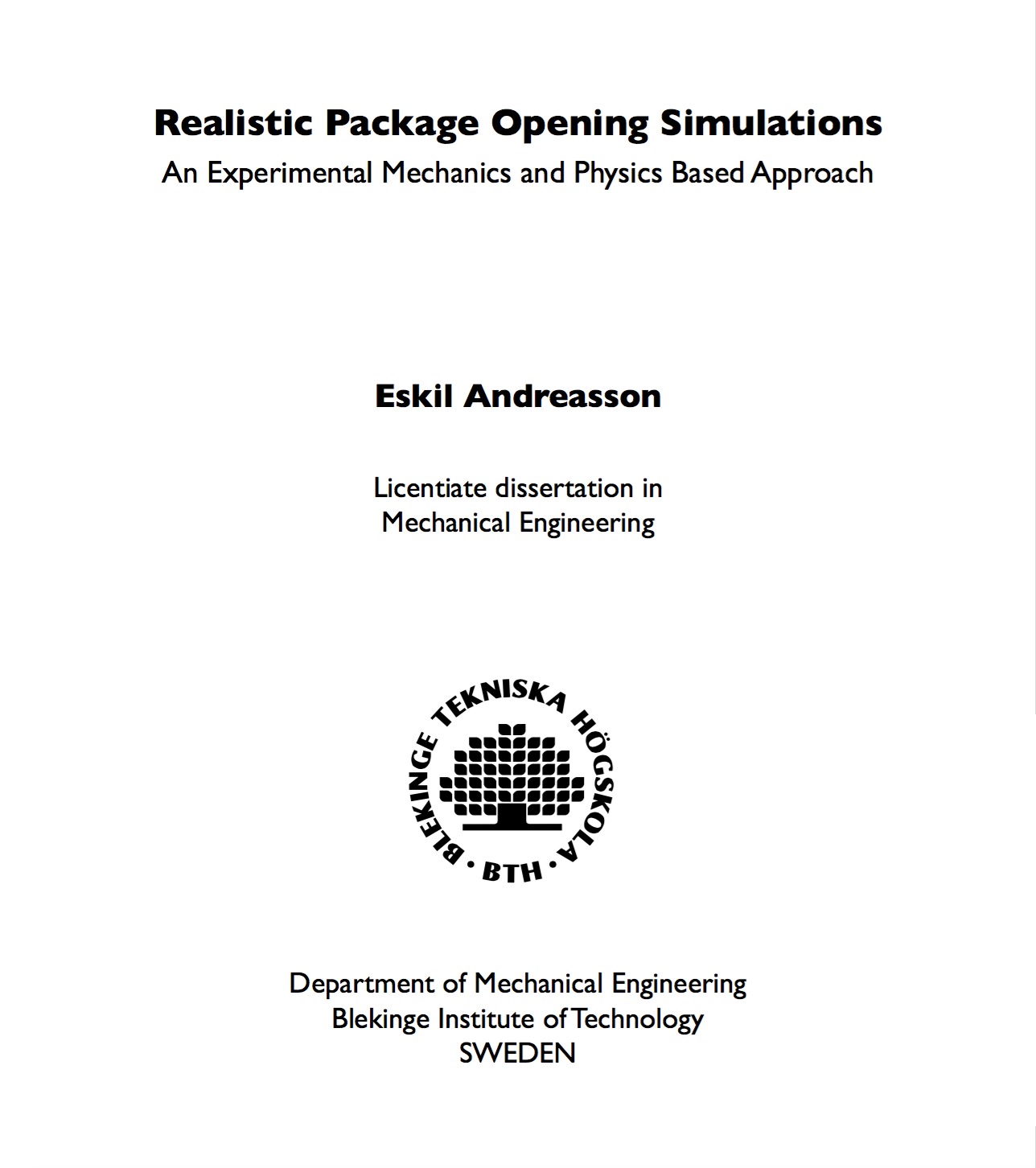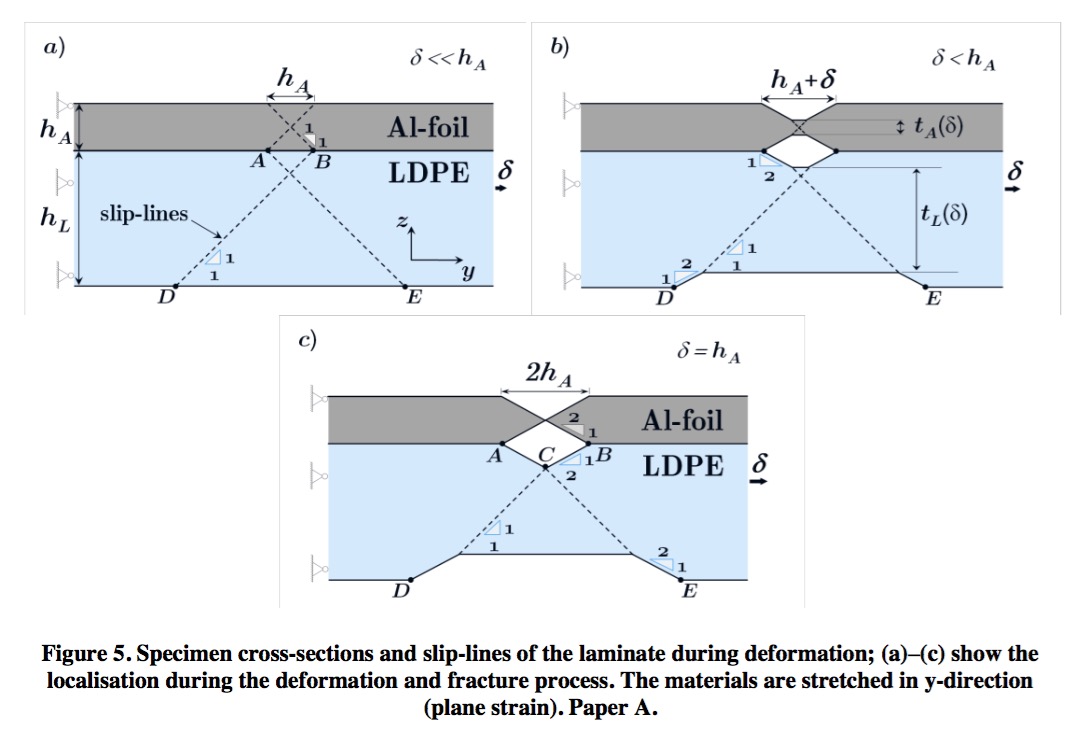
Realistic Package Opening Simulations : An Experimental Mechanics and Physics Based Approach
- Post by: Tobias Larsson
- 16th April 2015
- No Comment
Licentiate thesis of Eskil Andreasson, presented at BTH 2015-05-08..
Abstract
A finite element modeling strategy targeting package opening simulations is the final goal with this work. The developed simulation model will be used to proactively predict the opening compatibility early in the development process of a new opening device and/or a new packaging material. To be able to create such a model, the focus is to develop a combined and integrated physical/virtual test procedure for mechanical characterization and calibration of thin packaging materials. Furthermore, the governing mechanical properties of the materials involved in the opening performance needs to be identified and quantified with experiments. Different experimental techniques complemented with video recording equipment were refined and utilized during the course of work. An automatic or semi-automatic material model parameter identification process involving video capturing of the deformation process and inverse modeling is proposed for the different packaging material layers. Both an accurate continuum model and a damage material model, used in the simulation model, were translated and extracted from the experimental test results.
The results presented show that it is possible to select constitutive material models in conjunction with continuum material damage models, adequately predicting the mechanical behavior of intended failure in thin laminated packaging materials. A thorough material mechanics understanding of individual material layers evolution of microstructure and the micro mechanisms involved in the deformation process is essential for appropriate selection of numerical material models. Finally, with a slight modification of already available techniques and functionalities in the commercial finite element software AbaqusTM it was possible to build the suitable simulation model.
To build a realistic simulation model an accurate description of the geometrical features is important. Therefore, advancements within the experimental visualization techniques utilizing a combination of video recording, photoelasticity and Scanning Electron Microscopy (SEM) of the micro structure have enabled extraction of geometries and additional information from ordinary standard experimental tests. Finally, a comparison of the experimental opening and the virtual opening, showed a good correlation with the developed finite element modeling technique.
The advantage with the developed modeling approach is that it is possible to modify the material composition of the laminate. Individual material layers can be altered and the mechanical properties, thickness or geometrical shape can be changed. Furthermore, the model is flexible and a new opening device i.e. geometry and load case can easily be adopted in the simulation model. Therefore, this type of simulation model is a useful tool and can be used for decision support early in the concept selection of development projects.
Keywords
-
Polymer, aluminium foil, semi-crystalline, progressive damage, Abaqus
Reference
- Andreasson, Eskil (2015), Realistic Package Opening Simulations : An Experimental Mechanics and Physics Based Approach, Blekinge Institute of Technology Licentiate Dissertation Series, ISBN: 978-91-7295-299-7, ISSN: 1650-2140
- Web page: http://www.bth.se/fou/Forskinfo.nsf/Sok/a4db25f184fa5336c1257e06003755ff!OpenDocument

